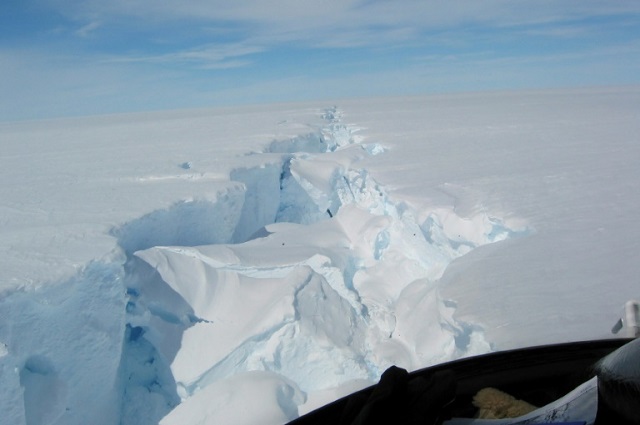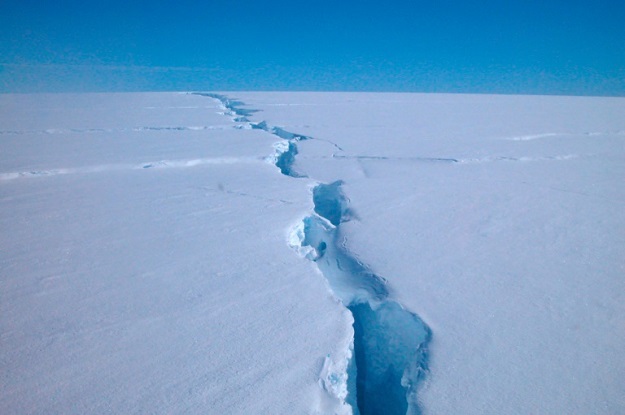
The iceberg, dubbed D28, broke away from the Amery ice shelf between September 24 and 25, according to observations from European and American satellites.
It measures 1,582 square kilometres (610 square miles), according to the European Copernicus program.
It is about 210 meters (yards) thick and contains 315 billion tonnes of ice, American glaciologist Helen Amanda Fricker said.
The figures are huge, but iceberg production is part of the normal cycle of ice shelves, which are an extension of the ice cap, she said.
"Ice shelves have to lose mass because they gain mass. They want to stay the same size," said Fricker, a professor at the Scripps Institution of Oceanography at the University of California.
The gain in mass comes from snow falling on the continent and glaciers that move slowly toward the shore.
 An Australian Antarctic Division image shows a “loose tooth” on the Amery Ice Shelf in eastern Antarctica. PHOTO: AFP
An Australian Antarctic Division image shows a “loose tooth” on the Amery Ice Shelf in eastern Antarctica. PHOTO: AFPThe east of Antarctica -- where D28 broke off -- is different from the west of the continent and Greenland, which are rapidly warming due to climate change.
"It's really important that the public doesn't get confused and think that this is climate change," Fricker said.
An iceberg that was three times larger broke off Antarctica two years ago, she said, causing panic at the time.
"It's a fine line because we definitely don't want people to think that climate change isn't happening," Fricker added.










1734878987-0/Copy-of-Untitled-(67)1734878987-0-270x192.webp)












COMMENTS
Comments are moderated and generally will be posted if they are on-topic and not abusive.
For more information, please see our Comments FAQ